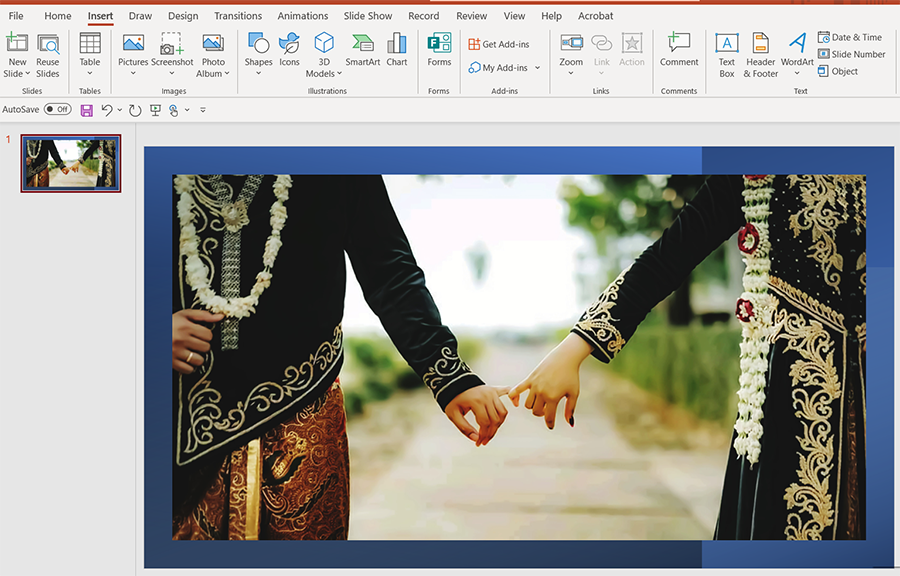Growing up in Australia, Aimee Leong was intrigued by deep questions.
“I thought I wanted to be a theoretical physicist,” she said. “I just thought that questions around things like dark matter were super interesting.”
But, like many millennials, her imagination was captured by the rise of creativity in personal technology. She had an eye for design, even in something as simple as a to-do list app.
“There was an app called Wunderlist that had an amazing user experience,” she said. “The animation made you feel very celebrated. So, I started following blogs from some of the people who created this app. I found it fascinating, how technology could make your world more enjoyable and more beautiful.”

Aimee quickly realized that what she really wanted to do in her career was help create those kinds of beautiful products and experiences. So, after graduating college, she joined Microsoft and moved into a Product Manager role on the Office Graphics team.
“We are building things at the intersection of productivity, self-expression, and creativity, which is what I’m really passionate about,” she observed.
We spoke with Aimee about her cutting-edge work on Office graphics, how responsible AI impacts that work, and the role that the Office Insiders program plays in releasing high-quality products at Microsoft.
What is the Office feature that you’ve been most excited to work on?
Aimee: I think it’s the premium content library, which we first released in April 2020. Previously, we asked users to go outside of Office to discover media, but it takes a savvy user to know how to acquire licensed content appropriate for their message, or to create it themselves. Users want quality in-app experiences that surface the right content in context. This effort has been hugely successful, both within Office and beyond.
Ultimately, Office is all about digital communication. When you communicate in person, there’s so much that adds nuance to your message—facial expressions, tonality, gestures, fashion, how you show up. In Graphics we think about how we can bring this personality and expression to digital storytelling.
So, we’re just talking about a large collection of images and other media?
Yes, it’s that, and more too! We’re trying to create an ecosystem for all of Microsoft that surfaces content based on what we know about you. The first thing we need is large cloud catalogs of content—images, icons, illustrations, emojis, video, audio, templates, and other expressive things. So we partner with design teams across Microsoft to create media, and we bring in artists and vendors to generate unique content for our collections. We’re also looking to scale up further by integrating with external libraries.
Then we partner across Microsoft 365 products to bring this content to users. We were born in Office, but our tech serves the company more broadly now—in places like SharePoint, Hololens, Planner, Teams, etc. We’re growing pretty rapidly. It can be overwhelming but it’s fun. We also layer in intelligence to understand what our users are doing and surface the right things at the right time, so they’re not sifting through a sea of content.
With social media, users are becoming natives at expressing themselves digitally. We don’t want them to be on their phone on social media saying, “This is a really fun world,” and then go into work and be like, “Oh, back to boring stuff.” We want all the tools they use to express themselves outside of work to be available inside of work.

What are some of the considerations when you’re deciding what kinds of media to add to the premium content library?
That’s been one of the biggest challenges of curating the content: I’m trying to ensure that each set of content is balanced for all ethnicities, genders, ability levels, age groups, etc. We never want someone to go into our content library and feel like it’s not relevant to them, or they feel alienated as a certain culture or type of person. That’s one of the reasons we love Cartoon People, because people can use them to mix and match different body parts and hairstyles—choosing whatever resonates with them.
Relevancy is another important pillar that guides our content purchasing. One thing we’ve done is to curate sets for different holidays or celebrations—like Halloween or Pride—or events like Mental Health Awareness Month. As we build in relevancy, we have to balance curation with personal bias, so we consult with Enterprise Resource Groups (ERGs) at Microsoft to ensure we’re representing topics authentically. Those are groups made up of employees who are very passionate about a specific topic. We asked them, what are the current conversations that you’re having? How can we build relevant content? How do we make sure we don’t miss any parts of the conversation?
We know our team has such a small lens on the world, and we’re trying to serve so many people. So we have two teams at Microsoft that we partner with closely, the Global Readiness team and the Responsible Artificial Intelligence (RAI) team. Those teams are very skilled at widening the lens with which we see the world.
Can you give us an example of a geographic consideration?
Take something like graphics and media related to weddings. We don’t want the user to search for “wedding” and only see U.S.-based wedding content; there’s so many different types of weddings and related celebrations across the world. That’s been a really fun exercise, and it has personally helped me open my eyes to the world and develop more empathy.

What does the term “responsible artificial intelligence” mean in this context?
The RAI team ensures that software features integrated with intelligence consider all types of people. Behind every intelligent system are some human rules, and when we build these human rules we put a lot of our biases into them. Intelligence is a multiplying factor for bias in a product, because instead of giving users all the options, we recommend a few by imagining what kind of person they are and what they want in that moment.
When an intelligent feature goes out to users across the world, it can be very alienating for some people. The RAI team has a lot of knowledge in this space, so they help guide Microsoft product teams like ours.
How is the Office Insiders program important in your work?
Office Insiders are a very important audience that we rely on before we release a feature to the full user base. Of course, we do as much validation and testing as we can internally. But, because Microsoft serves a worldwide audience, there’s no way we can understand all the different workflows and user scenarios involved with each feature. So, the Insider audience is the first time we can capture all of the unusual edge cases and issues we had not considered.
The Insider community is very keen to try out features and excited about the innovation that we’re delivering. When they test a feature, we get people from lots of different walks of life trying it out. We can stress test it and make sure it’s very high quality before we release it to the broad Production audience.
What does the future look like for graphics in Office?
I think the current challenge that we’re working through is scalability. As our service is becoming this Microsoft-wide thing, we’re focused on how to scale up to manage 10 times the integrations, 10 times the content, and 10 times the number of creators. We’re working to make our pipelines and APIs faster, stronger, and more flexible. We’re also trying to figure out how we can create a platform where artists, third parties, and regular users can all onboard and contribute to the Microsoft content ecosystem.
All these questions about scalability are running up against our priorities around appropriateness and responsibility. As we’re looking for scalability, we’re going to have to find some interesting solutions to scale up while maintaining trust in Microsoft’s brand.
What are some books or movies that inspire you?
The Studio Ghibli animated films by Hayao Miyazaki, like Ponyo, Spirited Away, and Totoro. I love the animation style, creativity, and honesty in the storytelling. I get to work closely with creators and artists in my role, which I love, because I think artists are so honest. What they’re creating looks like them. I feel like I get to meet Hayao Miyazaki by watching his movies, because his style and personality shine through his work.
Be sure to sign up for the Office Insider newsletter and get the latest information about Insider features in your inbox once a month!
